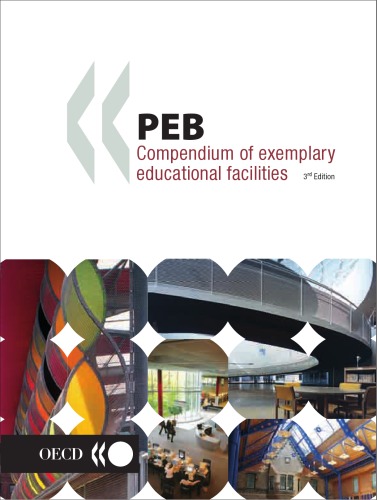

Most ebook files are in PDF format, so you can easily read them using various software such as Foxit Reader or directly on the Google Chrome browser.
Some ebook files are released by publishers in other formats such as .awz, .mobi, .epub, .fb2, etc. You may need to install specific software to read these formats on mobile/PC, such as Calibre.
Please read the tutorial at this link: https://ebookbell.com/faq
We offer FREE conversion to the popular formats you request; however, this may take some time. Therefore, right after payment, please email us, and we will try to provide the service as quickly as possible.
For some exceptional file formats or broken links (if any), please refrain from opening any disputes. Instead, email us first, and we will try to assist within a maximum of 6 hours.
EbookBell Team

5.0
60 reviews
ISBN 10: 9264022295
ISBN 13: 9789264022294
Author: OECD Organisation for Economic Co operation and Development
The "PEB Compendium of Exemplary Educational Facilities: Programme on Educational Building - PEB Papers, 3rd Edition" is a significant publication by the Organisation for Economic Co-operation and Development (OECD), specifically under its Programme on Educational Building (PEB), which is now known as the Centre for Effective Learning Environments (CELE). The 3rd edition was published in 2006.
This compendium serves as a valuable resource for educators, architects, policymakers, and anyone involved in the design, planning, and management of educational infrastructure. Its core purpose is to showcase innovative and successful examples of school buildings and educational spaces from around the world that effectively support modern learning methodologies and educational objectives.
The book is not a theoretical treatise but rather a practical guide and source of inspiration, presenting a collection of detailed case studies. These featured facilities, selected by an international jury, highlight best practices in areas such as:
The 3rd edition specifically expanded its scope to include pre-schools in addition to primary, secondary, and higher education facilities. Each entry in the compendium typically features full-color photographs, detailed floor plans, site descriptions, and explanations of the design concepts and key features, making it an indispensable reference for understanding the evolving landscape of educational architecture. It underscores the OECD's commitment to improving the effectiveness of educational infrastructure to support lifelong learning and quality education for all.
Part 1: Early Childhood and Elementary School Facilities
Part 2: Middle School and High School Facilities
Part 3: Higher Education Facilities
Part 4: Specialized Educational Facilities / Emerging Trends
compendium of exemplary educational facilities
designing for education compendium of exemplary educational facilities
designing for education compendium of exemplary educational facilities 2011
compendium examples
compendium of common knowledge
Tags: OECD Organisation for Economic Co operation and Development, Compendium, Facilities